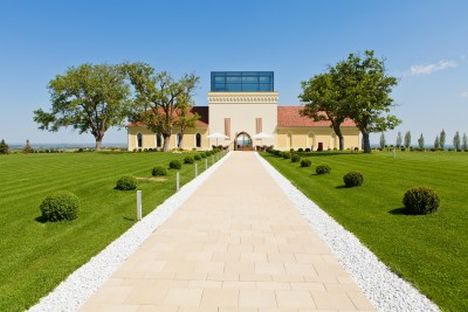The opportunities that arise from architectural projects for companies in the wine industry are unique. But the impressive modern buildings also obscure the risks associated with this development. Those who unerringly seize the opportunity can successfully distinguish themselves in the competitive environment with architecture. In many cases, however, it is to be feared that modern building styles cause a great stir as a communication flash in the pan, then lose their impact and finally become ballast.

There are three reasons for the discernible risks. First, architecture stands for decades. Unlike other communication media, stylistic change is impossible over many years. However, fashionable styles quickly lose their appeal, and a look at many architectural projects of the 1980s and 90s shows how quickly this can happen.
The second risk stems from the high investment volumes. Companies invest against the background of future marketing success. If this decreases because new buildings lose their appeal, the capital and maintenance costs become a burden.
The third problem in the wine industry is the often recognisable tendency to copy. Successful and modern projects are used as models for one's own building projects. Or one relies too much on planners in the choice of building style. The consequences are a lack of authenticity and disturbing contrasts between the personal style of the entrepreneurs and the external appearance of the company. This weakens communication and prevents identification with the company.

For the mostly smaller and often family-run companies in the wine industry, there is an opportunity to distinguish themselves with their personal style. Nothing is more unique and has a more lasting effect than personality. The goal must be to let the personal style in the company be recognised externally as well and to create a consistent image for the observer.
Applied to building projects, this means distinguishing oneself through personal architecture. Using it means becoming self-aware of one's style and expressing it through planning that is geared towards it. The goals, values, principles and style of the entrepreneurs are thus at the centre of a personality-oriented management.
The corporate communication based on this, built on a long-term approach, is timeless, steady, avoids permanent marketing fireworks and is thus more effective. Steadiness is perceived as credible, reliable and attractive. The striving for sustainability is also taken into account in a more comprehensive form. Challenge for wineries and architects In order to preserve the chance of realising one's own building projects without succumbing to fashions and external influences, the planning process must be carried out with special attention to personality orientation. To consciously work out one's own personal style is the task of the entrepreneurs themselves.
For consultants and architects, it is a challenge to support the process towards a personality-oriented architecture while leaving one's own preferences aside. Creativity must not refer to the realisation of one's own ideas, but rather to empathising with the personality of the client and implementing their ideas and conceptions.